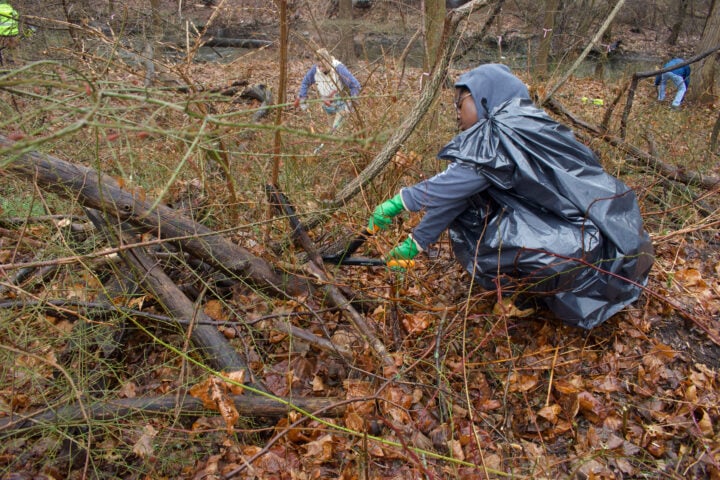Andreas Yilma – Special to the Southern News
Most toothpaste boxes have a portion that reads drug facts on the back. Underneath that it states sodium fluoride. Elsewhere on the box it states if you swallow more than used for brushing teeth, get medical help or contact Poison Control right away. According to the South Central Connecticut Regional Water Authority, New Haven has fluoridated water. However there are studies that raise concern over the safety of fluoride people’s tap water.
The reason why certain communities or countries fluoridate their public water is because they want to help prevent tooth decay. There are over three dozen scientific studies that correlate high fluoride exposure to low IQ levels in children. All of these studies were done in China, India, Mexico, and Iran.
“Correlation,” said SCSU professor, Jeffrey A. Webb, “is not causation.”.
Professor Webb, who has a doctorate in chemistry, viewed these studies for the first time. Afterwards the idea to fluoridate people’s tap water wasn’t completely sold. He believes there’s enough out there that it’s worth looking into.
“There should be a bigger study,” Webb said. “There might be something here.”
Based on a graph from the World Health Organization, tooth decay declined more in many non-fluoridated developed countries than in the United States. About 97 percent of Western Europe does not fluoridate their water.
“Based on these studies, I believe there might be a risk.” Said SCSU generalist in public health, Peggy Gallup.
Gallup holds a doctorate in public health. Her beliefs are about the same as Webb’s viewpoint on fluoridation of tap water. She accepts that some the studies show a negative effect on people’s health.
“A lot more population,” said Gallup, “based studies need to be done to make a definite link.”
Sophomore Brianna Alfaro doesn’t believe people in this country need to have their tap water fluoridated.
“I don’t think we need fluoride,” Alfaro said. “Not in the first world.”
Another study from an American scientific journal found that fluoride could do more damage to the human body besides the brain. Cancer Causes Control published a study called, ‘Age-specific fluoride exposure in drinking water and osteosarcoma.’ Osteosarcoma is a type of bone cancer. Their conclusion was that they found an association between fluoride exposure in drinking water during childhood and the frequency of osteosarcoma in males.
“It warrants further study,” Webb said. “It raises an eyebrow.”
“Those studies raise questions on the possible relationship of fluoride to cancer.” Gallup said.
The one study conducted on a possible link between fluoride and cancer may be harder to believe because it stands alone. Over three dozen studies have more strength for belief. In fact, Harvard School of Public Health conducted a review study on these foreign studies’ validity. HSPH and China Medical University in Shenyang combined 27 studies. They found strong signals that fluoride may negatively affect cognitive development in children.
“Maybe it does affect IQ.” Webb said.
Many adults drink tap water along with children in this country. Even though these studies were aimed at children, it raises suspicion on whether the fluoride can negatively impact adults’ brains and possibly males’ bones. These studies also give an uneasy feeling for pregnant women since everything they consume directly affect the embryos.
“I think,” said Alfaro, “there should be more studies.”
Photo Credit: Tom Mulrooney






























































































“Studies show negative effect…” Well, apparently they aren’t very good studies.
This is why there is something called the “systematic review.” This is an independent panel of experts who take their time to evaluate all the research, determining which studies are rigorous in their design and which studies are relevant. Systematic reviews are considered the gold standard in science.
At least five such reviews have been done on fluoride/fluoridation (listed on CDC website), and all have found no connection between fluoridation and any health problem. All have found it uniquely beneficial for all people of all ages.
This means the public can be quite confident about the safety of fluoridation, enjoy its ease of use and how inexpensive it is, and tell the anti-fluoridationists to go such an egg!
This is a good sign. A person in public health agreeing that more studies are needed.
We have an epidemic of teens in the US with varying degrees of dental fluorosis. Let’s compare the presence and severity of fluorosis in their teeth with IQ scores. Just make sure the examiners are blinded as to what the study is looking for.
I think that the precautionary principle suggests that fluoridation should be suspended until these studies are completed.
There are many factors involved in the creation of the fluorosiliscic acid waste (HFA) used for fluoridation. Other chemicals are added such as oil based defoamers (possibly containing dioxins), polymers, petroleum products, naphthalene, sulfides, Synspar and various reagents. During the phosphoric acid concentration processes, these added chemicals and inherent toxic contaminants common in phosphate rock reach boiling point in a partial vacuum at very high temperatures, about 500 degrees F .The vapors from all these chemicals are captured in the pollution control scrubbers along with the fluorine and fluorosilicate gases. The scrubbers capture everything, including pollution from tank farms and other processes. Also the more efficient the scrubbing operation the more pollutants will be concentrated in the scrubber liquor. Phosphoric acid reaction vessels are made of the alloy, Hastelloy G-30. The Hastelloy G 30 vessels only last for about three years…The vessels are corroded beyond use by the presence of fluorides in the phosphoric acid. The metals from Hastelloy G-30 (nickel, beryllium, etc.) are also present in the HFA as metal complexed fluorosilicates. Further review of the literature reveals the following – there are a range of co-contaminants in this waste product including arsenic (carcinogen), lead, mercury and radioactive materials. Some others identified include hexane, methyl alcohol, formaldehyde, methyl ethyl ketone, benzene, toluene, and styrene. Heavy metals such as lead and mercury are present in the phosphate rock. The phosphate rock is mildly radioactive due to the presence of some radionuclides. No emission factors are included for these HAPs (hazardous air pollutants), heavy metals, or radionuclides due to the lack of sufficient data. (EPA Emission Factors 1/95). The Sulphuric acid used for digesting the phosphate rock is usually waste acid from other industries, as it is cheaper. Now this introduces an extra range of pollutants from other industries into the system. Nobody knows what all the contaminants are in this waste product as it is not tested thoroughly. It is then transported, in its raw state to the water treatment plant and slowly bled into the public water supply. If your community is fluoridated, then your water purification plant is also a toxic waste disposal facility for the phosphate fertilizer industry, aluminium smelting and other industries. What people are drinking is a toxic cocktail of untreated air pollution control scrubber liquor.